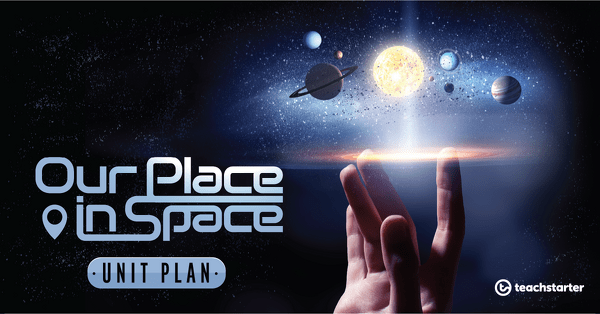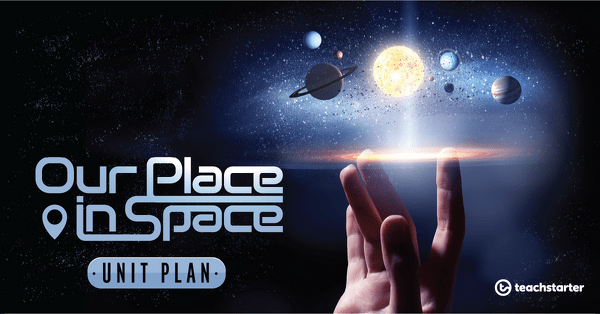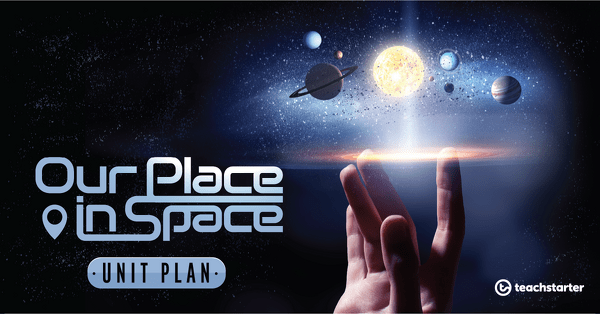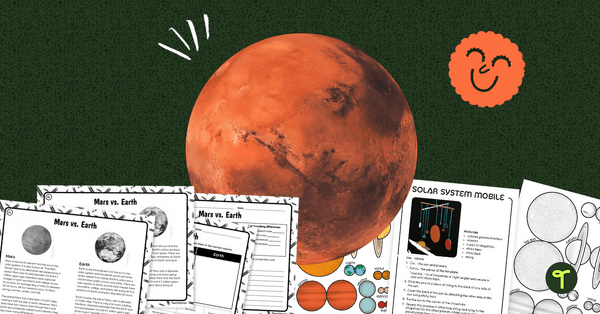Planets Teaching Resources
Teaching about the planets in our solar system? Get printable worksheets, planet research project templates, science games and activities and more to bring these outer space objects into your elementary classroom this school year!
This collection of teaching resources is aligned with the NGSS curriculum and has been carefully created by our expert teacher team to save your valuable lesson planning time! Browse the whole collection to find differentiated and editable science printables and Google slides.
Looking to learn more about the planet curriculum for elementary school, or just need some fresh ideas to engage your students? Read on for a primer from our teacher team, including answers to kids' pressing questions about whether or not Pluto is a planet, which planet is the smallest, which is the largest and more!
What Is a Planet? A Kid-Friendly Definition
Let's begin with a definition you can use in the classroom to explain what a planet is!
A planet is a big ball made up of rock and gas that goes around the sun in space. The planet we live on is Earth, and there are other planets out there too. Sometimes you can see planets in the sky at night, right next to the stars!
Here are a few key vocabulary terms that will come in handy when teaching the planets as well:
- Terrestrial planet — A rocky planet like Earth, Mars, Venus or Mercury
- Dwarf planet — A small planet that orbits the sun but is not big enough to be considered a full-sized planet
- Gas giant — A planet made mostly of gas, like Jupiter, Saturn, Uranus or Neptune
Fun Planet Activities for the Classroom
Looking for fun planet activities to engage your students? You can explore this complete collection for printable and digital ideas and use these activities to inspire your class!
- Create a scale model of the solar system out on the school grounds. Have one student draw the sun in chalk on your playground and then measure the distance of each planet from the sun. This is a great way to demonstrate why the days vary in time from planet to planet and the time the planets take to orbit the sun.
- Take a virtual field trip to a planetarium!
- Create planet collages. Divide your students into small groups, and give each group a large piece of construction paper, glue, magazines, newspapers and other materials. Ask each group to create a collage of one planet, using the materials to show the planet's unique features, such as its size, color and surface characteristics.
Read on for more common student questions and planet facts to share with your class!
How Many Planets Are There?
There are eight planets in our solar system, including Earth. If you list out the planets in order from closest to the sun to farthest, they are:
- Mercury
- Venus
- Earth
- Mars
- Jupiter
- Saturn
- Uranus
- Neptune
Is Pluto a Planet?
Ah, it's a question you might get from students whose parents were taught that there were nine planets, and Pluto was one of them!
Up until 2006, Pluto was considered to be one of the planets in our solar system, but not anymore! That's when the International Astronomical Union (IAU) — a global group of scientists who are responsible for classifying celestial objects like planets — decided to reclassify Pluto as a "dwarf planet."
Astronomers had discovered several other objects beyond Pluto that were similar in size and composition to Pluto. That's when the IAU came up with 3 criteria to decide what they would consider a planet:
- It must orbit the sun
- It must be nearly spherical in shape
- It must have "cleared its orbit" by being gravitationally dominant in its region of space.
It turns out Pluto meets the first two criteria, but it fails to meet the third criterion!
What Is the Smallest Planet?
Pluto was once considered the smallest planet, so parents helping their children with their science homework might be perplexed as to which planet holds that distinction now!
The smallest planet in the solar system is now Mercury, which has a diameter of about 3,031 miles (4,880 km).
What Is the Biggest Planet?
If Mercury's the smallest, what's the biggest planet out there in the Milky Way? The distinction for biggest planet goes to Jupiter, which has a diameter of about 86,881 miles (139,822 km).
To give your students some perspective, that makes it more than 11 times wider than Earth!
Which Planet Has the Most Moons?
Heading off to the moon with your second or third-graders? While we're on the topic of Jupiter, it's worth noting this is the planet with the most moons in our solar system.
Jupiter has 79 moons, including Io, Europa, Ganymede and Callisto.

What Is the Coldest Planet?
Discussing the characteristics of the individual planets? The coldest planet is Neptune, which has an average temperature of about -353°F (-214°C). Brrrrr!
Neptune is the farthest planet from the sun, so it gets very little sunlight to warm it up.
Neptune's atmosphere is mostly made up of hydrogen, helium and methane. It traps heat and contributes to its extremely cold temperature.
- Plus Plan

Planets of the Solar System Posters
Use this set of visually striking and informative posters about the planets of our solar system in your classroom.
- Plus Plan

A Star, Some Planets and More!
- Plus Plan

Sisters of the Solar System - The Jovian Planets
- Plus Plan

Sisters of the Solar System - The Terrestrial Planets
-

20 Fun Facts About Mars to Get Kids Excited About Your Space Lessons
Add these fun facts about Mars to your lesson plans — plus see our teacher team's favorite ways to use them in classroom activities!
